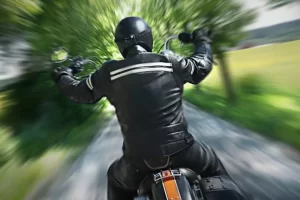Motorcycle Safety 101 – Gear Training and Riding Techniques

At first glance, riding a motorcycle may offer unparalleled freedom; however, its inherent risks must also be taken into consideration. Obeying traffic regulations, adjusting mirrors properly and wearing quality gear are all ways you can reduce the chances of serious injury or worse.
One key to avoiding collisions is consistently driving at 70 percent of your skill level, providing enough of a cushion against unexpected road conditions or other drivers who suddenly slow or stop.
Braking
Braking is an art motorbike riders must master. Each brake serves a different role when stopping the bike, and using both in concert can reduce stopping distances significantly. Engine braking – in which throttle is reduced gradually before gears gradually lower to bring about stopping distance – also plays an important role. When used effectively it reduces dependence on brakes while simultaneously improving safety.
Every rider should conduct a T-CLOCS inspection prior to every ride, inspecting their bike and its accessories to make sure everything is functioning optimally. If something seems amiss, take the time to resolve it before hitting the road.
Driving defensively is another effective way to increase motorcycle safety. This involves anticipating the actions of other drivers and keeping a safe distance between yourself and cars, checking blind spots before passing them and regularly using turn signals so other motorists can see you.
Steering
Motorcycles on the road makes them easy for other drivers to ignore or underestimate them, leading them to miss them when changing lanes, turning right, or merging into traffic. Riders should practice defensive driving techniques to minimize this risk.
To avoid this hazard, riders should keep their eyes focused on the road ahead and always look where they wish to travel – this helps avoid “target fixation,” in which riders become distracted by an obstacle and unwittingly steer towards it.
Riders must also keep a safe distance between themselves and other vehicles, particularly large trucks and semi-trucks that create significant turbulence that could prove hazardous for motorcyclists. For this reason, riders are recommended to remain three to four seconds behind trucks so as to have enough time if the truck suddenly stops or turns without impacting them too severely. Riders should make themselves visible to other drivers by not riding between other vehicles and always keeping their headlights illuminated.
Turning
Poor turn technique is one of the primary contributors to motorcycle crashes. While learning this essential skill may be frustrating for new riders, it remains one of the key ones needed as a motorcyclist.
Experienced riders should attend a basic riding course before venturing off on their own. Such courses provide valuable lessons on how to master your motorcycle and handle its power in any situation on the road.
Keep an eye on the conditions of the road you’re riding on as well, checking mirrors and keeping an eye out for any traffic that might present hazards – this may involve as simple a task as making sure a car in front of you doesn’t suddenly slow or accelerate dangerously; giving yourself enough space and time for responding should an unexpected incident arise.
Acceleration
As a motorcyclist, it is wise to be prepared for anything that might go amis. While a deer darting into your path might be one example, other drivers’ reckless moves may also cause major problems for riders.
Common errors for drivers include forgetting to check their mirrors prior to diving into traffic to change lanes – an oversight which could prove fatal.
As your primary defense against this situation, the key is creating an escape route. Even something as simple as being able to swerve into Mrs. Smith’s front yard should you need one is enough of a defense mechanism against center punchers like that Buick. To help yourself do this, create a habit of scanning both sides of the roadway at all times when driving – this allows you to detect suspicious movements by other drivers more effectively and react in accordance with them accordingly.
